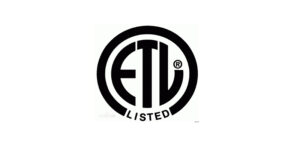Ceiling fans and wall fans differ primarily in their mounting location and airflow distribution patterns.
Ceiling fans mount to the ceiling and provide wide, even air circulation throughout a space, while wall fans attach to walls and deliver direct, targeted airflow to specific areas, offering different advantages for various commercial applications.
Let’s examine both fan types in detail to help your business make informed procurement decisions.
We’ll compare specifications, installation requirements, and cost-effectiveness to optimize your inventory and client recommendations.
What Technical Specifications Should Businesses Consider When Selecting Ceiling Fans?
A ceiling fan is a rotating electrical device mounted on the ceiling that circulates air downward with horizontal blades.
Commercial models provide uniform cooling across large areas, come in various industrial and decorative styles, and feature reversible motors for year-round climate optimization, making them suitable for offices, retail spaces, and hospitality environments.

Ceiling fans have become essential components in commercial and industrial cooling solutions due to their efficiency, versatility, and aesthetic options.
These fans serve both functional and design purposes in various business environments.
Key Technical Specifications of Ceiling Fans
Commercial ceiling fans come with several important specifications that affect their performance in business settings:
Blade Configuration
Commercial ceiling fans typically feature different blade configurations than residential models, optimized for specific business environments:
| Blade Count | Air Movement | Noise Level | Best Commercial Applications |
|---|---|---|---|
| 3 Blades | Good | Lower | Modern office spaces, boutique retail |
| 4 Blades | Better | Medium | Standard commercial spaces, restaurants |
| 5+ Blades | Best | Higher | Large venues, industrial facilities |
Industrial-grade ceiling fans often feature specialized blade designs with airfoil technology that maximizes air movement while minimizing energy consumption.
These designs can increase efficiency by 15-25% compared to standard blades, resulting in significant operational cost savings for businesses.
Direction Control Mechanisms
Commercial-grade ceiling fans typically include robust direction control systems:
- Counterclockwise (Summer Mode): Pushes air downward, creating cooling airflow throughout the space
- Clockwise (Winter Mode): Draws air upward then down along walls, redistributing warm air without creating cooling drafts
This bidirectional capability makes ceiling fans valuable assets year-round, contributing to HVAC efficiency and potentially reducing heating and cooling costs by 15-30% when properly implemented in commercial spaces.
Illumination Integration
Many commercial ceiling fans incorporate lighting systems that serve dual purposes:
| Light Type | Energy Efficiency | Lifespan | Commercial Applications |
|---|---|---|---|
| LED | High (75% less energy) | 50,000+ hours | Offices, retail, hospitality |
| Incandescent | Low | 1,000-2,000 hours | Budget installations |
| Dimmable LED | High with flexibility | 50,000+ hours | Restaurants, conference rooms |
Integrated lighting eliminates the need for separate ceiling fixtures, reducing installation costs and simplifying electrical planning.
Many commercial models offer customizable color temperature options (3000K-5000K) to create appropriate atmospheres for different business environments.
Control Systems
Commercial ceiling fans offer various control mechanisms suitable for business environments:
- Building Management Systems (BMS): Integration with centralized controls
- Wall Controls: Hardwired multi-fan control panels
- Remote Systems: Wireless operation for difficult access areas
- Smart Controls: IoT-enabled management with scheduling and usage analytics
Advanced control systems allow facility managers to optimize fan operation based on occupancy patterns, temperature conditions, and time of day, maximizing energy efficiency while maintaining comfort standards.
Durability and Maintenance Requirements
Commercial-grade ceiling fans are engineered for extended operation in demanding environments:
- Typical lifespan of 15-20 years with proper maintenance
- Sealed bearings requiring minimal lubrication
- Dust-resistant motor housings for clean operation
- Reinforced mounting systems for vibration resistance
Regular maintenance protocols should include:
- Quarterly blade cleaning to maintain airflow efficiency
- Annual hardware inspection and tightening
- Motor bearing lubrication according to manufacturer specifications
- Electrical connection verification
Implementing a preventative maintenance schedule extends operational life and prevents costly business disruptions due to unexpected failures.
What Are the Industrial Applications of Wall Mounted Fans?
A wall-mounted fan is a versatile industrial cooling device that attaches directly to vertical surfaces, preserving valuable floor space. It provides focused airflow with adjustable angles and oscillation capabilities, making it ideal for workshops, production lines, warehouses, and commercial kitchens where localized cooling or ventilation is required.

Wall fans offer practical cooling solutions for many industrial and commercial applications where other ventilation systems might be impractical or cost-prohibitive.
They combine directional airflow capabilities with space-efficient installation.
Key Industrial Specifications of Wall Mounted Fans
Wall fans designed for commercial and industrial use offer several important features:
Mounting Systems
Industrial wall fans require robust mounting mechanisms to ensure stability during continuous operation:
| Mounting Type | Load Capacity | Vibration Resistance | Industrial Applications |
|---|---|---|---|
| Fixed Industrial Mount | High (15-25 lbs) | Excellent | Factories, warehouses |
| Adjustable Arm Mount | Medium (10-15 lbs) | Good | Workshops, kitchens |
| Heavy-Duty Swivel Mount | High (15-25 lbs) | Very Good | Manufacturing, garages |
Industrial-grade mounting systems typically feature reinforced steel construction with vibration-dampening components to prevent loosening during extended operation.
Many include secondary safety cables as backup retention systems in high-vibration environments.
Oscillation Mechanisms
Commercial wall fans offer various air distribution patterns:
- Fixed Position: Concentrated airflow for specific workstations or equipment
- Manual Adjustment: Repositionable for changing cooling needs
- Programmable Oscillation: Automated movement covering 60-120 degrees
- Sectional Oscillation: Programmable to cover specific zones within the oscillation range
These capabilities allow businesses to customize airflow patterns based on specific operational requirements, shift changes, or seasonal needs.
Performance Specifications
Industrial wall fans typically offer multiple performance settings optimized for commercial environments:
- Low Velocity: 900-1100 RPM, 30-40 dB noise level, suitable for offices and retail
- Medium Velocity: 1100-1200 RPM, 45-55 dB noise level, suitable for restaurants and light industrial
- High Velocity: 1200-1350 RPM, 60-70 dB noise level, suitable for manufacturing and warehouses
Higher-end industrial models may include variable frequency drives (VFDs) that allow precise speed control rather than fixed settings, optimizing both cooling performance and energy consumption.
Durability Features
Commercial wall fans include several durability enhancements:
- Motor Protection: Thermal overload protection prevents burnout during continuous operation
- Environmental Ratings: IP44-IP56 ratings for dust and moisture resistance
- Housing Materials: Impact-resistant ABS plastic or powder-coated steel
- Cord Protection: Strain relief and reinforced power connections
These features extend operational life in demanding industrial environments where dust, moisture, and continuous operation are common.
Installation Considerations for Commercial Settings
Wall fans for business applications require specific installation planning:
- Wall Composition: Concrete, metal studs, or wood framing require different mounting hardware
- Power Requirements: Dedicated circuits may be needed for multiple-fan installations
- Clearance Zones: Minimum 7-foot height and adequate side clearance for oscillation
- Air Circulation Patterns: Strategic placement to avoid cross-currents or dead zones
Proper installation documentation should be maintained for facility management, safety compliance, and warranty validation purposes.
How Do Ceiling Fans and Wall Fans Compare in Commercial Cooling Efficiency?
Ceiling fans and wall fans employ fundamentally different approaches to commercial cooling.
Ceiling fans distribute air throughout entire spaces, creating consistent air movement across large areas with relatively low velocity.
Wall fans deliver concentrated, high-velocity airflow to specific zones, creating more intense cooling effects in limited areas, allowing businesses to target cooling where most needed.

When evaluating cooling solutions for commercial applications, understanding the efficiency differences between ceiling and wall fans is crucial for optimizing both comfort and operational costs.
Airflow Distribution Analysis
The airflow patterns created by each fan type result in different cooling experiences in commercial settings:
Ceiling Fan Air Distribution Metrics
Ceiling fans create a column of moving air that expands outward as it reaches floor level.
This creates a consistent air movement pattern throughout the space, with these typical coverage specifications:
| Fan Diameter | Commercial Coverage Area | Recommended Ceiling Height | CFM Rating |
|---|---|---|---|
| 36 inches | Up to 100 sq. ft. | 8-10 feet | 2,000-3,000 |
| 48 inches | Up to 225 sq. ft. | 9-11 feet | 3,000-4,500 |
| 56 inches | Up to 400 sq. ft. | 10-12 feet | 4,500-6,500 |
| 72+ inches | 400+ sq. ft. | 12+ feet | 6,500-10,000+ |
The downward airflow creates an evaporative cooling effect that can make occupants feel 4-8°F cooler without changing the actual air temperature.
This perceived cooling effect can allow businesses to adjust HVAC setpoints, potentially reducing cooling costs by 15-25% during warm weather.
Wall Fan Directional Performance
Wall fans produce a concentrated, high-velocity airstream with these typical performance metrics:
- Effective Range: 15-30 feet in primary direction
- Coverage Width: 6-12 feet at maximum effective distance
- Velocity Gradient: Air speed decreases approximately 50% every 10 feet from source
- CFM Rating: 1,500-3,000 depending on model and size
The focused nature of wall fan airflow makes them particularly effective for spot cooling in industrial environments, cooling specific workstations, or providing relief in high-heat areas like commercial kitchens or manufacturing processes.
Energy Efficiency Comparison
Several factors affect the energy efficiency of each fan type in commercial applications:
Power Consumption Analysis
The operational costs of each fan type vary based on specifications and usage patterns:
- Ceiling fans: 50-100 watts, averaging $0.01-$0.02 per hour at $0.15/kWh
- Wall fans: 40-70 watts, averaging $0.006-$0.01 per hour at $0.15/kWh
While individual wall fans consume less power, multiple units may be required to cool the same area as a single ceiling fan, potentially resulting in higher overall energy usage for equivalent coverage.
Motor Technology Efficiency
Motor design significantly impacts long-term operational costs:
- DC Motors: 70-80% more efficient than AC motors, with smoother operation and better speed control
- Electronically Commutated Motors (ECM): Offer 90% efficiency ratings with minimal heat generation
- Permanent Split Capacitor (PSC): Standard in many commercial fans, offering moderate efficiency
- Shaded Pole Motors: Least efficient but lowest initial cost
Premium commercial fans increasingly feature DC or ECM technology, offering substantial long-term savings despite higher initial investment.
A 75-watt DC ceiling fan might consume only 30 watts while delivering equivalent airflow to a traditional AC motor.
HVAC System Integration Benefits
Both fan types can enhance existing HVAC system efficiency:
- Ceiling fans can improve air mixing, reducing stratification in high-ceiling spaces
- Wall fans can supplement HVAC in areas with higher cooling demands
- Both fan types can extend the comfort range by 4-7°F without additional cooling
- Integrated control systems can coordinate fan operation with HVAC cycles
This supplemental cooling approach can reduce HVAC runtime by 15-30% in properly designed systems, offering significant operational savings for commercial facilities.
What Installation Requirements Should Businesses Consider for Ceiling vs. Wall Fans?
Wall fans generally require simpler installation processes than ceiling fans in commercial settings.
Wall fan installation typically involves mounting a load-rated bracket to structural elements and connecting to standard power.
Ceiling fans require more complex mounting to structural ceiling supports, dedicated electrical circuits, and often need specialized equipment and multiple technicians for safe installation.

The installation requirements for each fan type have significant implications for project timelines, labor costs, and facility disruption.
Understanding these differences helps businesses make informed decisions about which cooling solution best fits their operational constraints.
Ceiling Fan Commercial Installation Requirements
Installing ceiling fans in commercial environments involves several technical considerations:
Structural Requirements
Commercial ceiling fans must be securely anchored to support both static weight and dynamic forces:
| Mounting Scenario | Support Requirement | Installation Method | Safety Factor |
|---|---|---|---|
| Exposed Structure | Direct joist/beam mounting | Lag bolts or through-bolts | 5:1 minimum |
| Drop Ceiling | Above-ceiling support structure | Threaded rod with support bracket | 5:1 minimum |
| Concrete Ceiling | Expansion anchors or embedded supports | Mechanical anchors rated for dynamic loads | 5:1 minimum |
Commercial installations typically require engineering verification for fans over 48″ diameter or in high-occupancy areas, with load calculations documenting adequate safety factors for both static and dynamic loads.
Electrical Specifications
Commercial ceiling fan installations must meet specific electrical requirements:
- Dedicated circuits for groups of 2-4 fans depending on amperage
- Commercial-grade junction boxes rated for fan support (70 lbs minimum)
- Proper grounding and bonding according to local commercial codes
- Separate switching for fan and light functions if applicable
- EMI/RFI suppression in sensitive environments (healthcare, laboratories)
Many jurisdictions require licensed electrical contractors for commercial installations, with inspections and documentation for code compliance and insurance purposes.
Access and Equipment Needs
Installing ceiling fans in commercial spaces typically requires:
- Scissor lifts or scaffolding for ceilings over 10 feet
- Multiple technicians for safe handling of larger units
- Specialized tools for electrical and structural connections
- Temporary workspace closure during installation
- After-hours installation to minimize business disruption
These requirements add to the total installed cost beyond the fan unit itself, with typical commercial installation labor running $150-$400 per fan depending on ceiling height and complexity.
Wall Fan Commercial Installation Process
Wall fans for commercial applications have different installation requirements:
Structural Mounting
Wall fan installation requires proper structural support:
- Direct mounting to concrete walls using expansion anchors
- Mounting to metal studs using toggle bolts or backing plates
- Wood stud mounting using lag screws or through-bolts
- Reinforced mounting for high-vibration industrial environments
Most commercial wall fans include mounting templates and hardware appropriate for common commercial wall types, simplifying the specification and installation process.
Electrical Considerations
Wall fan electrical requirements typically include:
- Standard 120V grounded outlets within cord reach
- Circuit capacity for multiple fans (typically 4-8 fans per 20A circuit)
- GFCI protection in damp locations (commercial kitchens, wash-down areas)
- Optional hardwiring for permanent installations
- Compliance with local commercial electrical codes
Many wall fan models can be installed without requiring licensed electricians if using existing properly installed outlets, reducing installation costs.
Installation Logistics
The typical wall fan installation process involves:
- Single technician installation in most cases
- Standard tools (drill, level, screwdriver)
- Minimal business disruption (15-30 minutes per fan)
- Limited or no need for specialized access equipment
- Ability to install during business hours in many cases
These factors typically result in installation costs of $50-$100 per fan, significantly lower than ceiling fan installation.
Regulatory Compliance Considerations
Both fan types must meet various commercial building regulations:
- Minimum height clearances (7′ from floor to blade for ceiling fans)
- UL/ETL listing for commercial applications
- Fire code compliance for electrical components
- ADA compliance for protruding objects (wall fans)
- OSHA requirements for guarding in industrial settings
Proper documentation of compliance should be maintained in facility records for inspection and insurance purposes.
How Do Ceiling Fans and Wall Fans Compare in Commercial Design Applications?
Ceiling fans offer more architectural integration options and can serve as design elements in commercial spaces with various mounting styles, finish options, and lighting integrations.
Wall fans prioritize functional performance with more limited design variations, though industrial-modern aesthetics have expanded their acceptance in contemporary commercial design schemes.

The visual impact of fan selection can significantly influence the overall impression of commercial spaces.
Understanding the design implications helps businesses balance functional requirements with brand image and customer experience considerations.
Ceiling Fan Commercial Design Applications
Ceiling fans often serve dual roles as both functional devices and design elements in commercial spaces:
Commercial Style Categories
Ceiling fans for business applications come in several distinct design categories:
| Style | Visual Characteristics | Commercial Applications |
|---|---|---|
| Commercial/Industrial | Minimalist, functional, exposed components | Warehouses, factories, gyms |
| Contemporary Commercial | Clean lines, metallic finishes, integrated design | Offices, retail, restaurants |
| Traditional Commercial | Classic forms, wood elements, decorative details | Hotels, banks, historic renovations |
| Specialty Commercial | Unique designs, custom finishes, signature elements | Boutique retail, upscale hospitality |
The wide range of available styles allows ceiling fans to complement virtually any commercial design scheme, from utilitarian industrial spaces to luxury hospitality environments.
Material and Finish Specifications
Commercial ceiling fans offer numerous material and finish options to coordinate with other building elements:
- Blade materials: Aluminum, steel, composite, natural wood, laminated wood
- Body finishes: Brushed nickel, oil-rubbed bronze, matte black, architectural white, custom colors
- Light fixture components: Clear glass, frosted acrylic, seeded glass, colored glass, custom diffusers
These options allow ceiling fans to coordinate with other architectural elements like lighting fixtures, door hardware, and HVAC grilles, creating a cohesive design language throughout the space.
Scale and Proportion Considerations
Ceiling fans must be appropriately sized for commercial spaces:
- Small Commercial (36-42″): Small offices, bathroom suites, small retail
- Medium Commercial (48-56″): Standard offices, classrooms, medium retail
- Large Commercial (60-72″): Conference rooms, restaurants, large retail
- HVLS Commercial (8-24′): Warehouses, gymnasiums, large industrial
Proper sizing ensures both optimal performance and appropriate visual proportion to the space.
Undersized fans appear inadequate, while oversized units can visually overwhelm smaller spaces.
Wall Fan Commercial Design Applications
Wall fans in commercial settings have traditionally emphasized function over form, but design options have expanded:
Commercial Application Aesthetics
Wall fan designs have evolved to suit different commercial environments:
- Industrial: Exposed metal, cage guards, utilitarian finishes
- Commercial: Streamlined housings, neutral colors, minimal branding
- Designer Commercial: Sculptural elements, premium finishes, architectural integration
- Specialty: Custom colors, branded elements, unique forms
While offering fewer style variations than ceiling fans, modern wall fans can be selected to either blend with or complement commercial interior schemes.
Finish and Material Options
Commercial wall fans now come in various finishes to coordinate with interior design:
- Powder-coated metals in neutral commercial colors
- Stainless steel for food service and clean environments
- Impact-resistant polymers in coordinating colors
- Custom finishes for brand-specific applications
These finish options help wall fans integrate with commercial color schemes and material palettes rather than appearing as purely utilitarian additions.
Spatial Integration Strategies
Wall fans interact with commercial space planning in specific ways:
- They occupy wall space that might otherwise display merchandise, signage, or art
- They can be positioned to complement traffic patterns and seating arrangements
- They may be seasonally deployed in some businesses
- They can be integrated with shelving, millwork, or other wall-mounted elements
Thoughtful placement can minimize visual impact while maximizing functional benefits in commercial settings.
Which is More Cost-Effective for Commercial Applications, Ceiling Fans or Wall Fans?
Wall fans typically have lower initial costs than ceiling fans for commercial applications, with industrial wall fans ranging from $100-$300 compared to $200-$1,000+ for commercial ceiling fans.
However, ceiling fans often provide better long-term value through wider coverage areas, longer operational lifespans, and potential HVAC savings.
The most cost-effective solution depends on specific application requirements and facility characteristics.

Cost-effectiveness analysis for commercial fan applications must consider multiple factors beyond simple purchase price.
A comprehensive evaluation includes installation, operation, maintenance, and replacement costs over the expected facility lifecycle.
Total Cost of Ownership Analysis
A complete cost comparison must examine several financial factors:
Initial Investment Comparison
The upfront costs for commercial applications include:
| Cost Component | Ceiling Fan (Commercial Grade) | Wall Fan (Industrial Grade) |
|---|---|---|
| Equipment Cost | $200-$1,000+ | $100-$300 |
| Installation Labor | $150-$400 per unit | $50-$100 per unit |
| Electrical Modifications | $100-$300 (if needed) | $0-$100 (if needed) |
| Controls | $50-$200 | $0-$50 |
| Total Per Unit | $400-$1,900 | $150-$450 |
While wall fans have a clear advantage in initial cost, the coverage area difference must be considered.
A single 56″ ceiling fan might provide the same coverage as 2-3 wall fans, potentially equalizing the per-square-foot cost.
Operational Cost Factors
Ongoing operational expenses include:
- Energy consumption: Ceiling fans average 75W vs. 50W for wall fans, but may cover 3-4 times the area
- Maintenance requirements: Both types require periodic cleaning and inspection
- Component replacement: Wall fans typically require more frequent motor replacement
- HVAC impact: Ceiling fans often provide greater HVAC efficiency improvements
When calculated on a per-square-foot basis over a 10-year period, ceiling fans often show lower operational costs despite higher energy consumption per unit.
Lifespan and Replacement Considerations
The expected service life affects long-term cost analysis:
- Commercial ceiling fans typically last 15-20 years with proper maintenance
- Industrial wall fans typically last 5-10 years in continuous operation
- Replacement parts availability varies significantly between manufacturers
- Installation costs are incurred with each full replacement
This lifespan difference means wall fans may require 2-3 complete replacements during the service life of a single ceiling fan, significantly affecting long-term cost comparisons.
Application-Specific Cost Factors
Different commercial environments have unique considerations affecting cost-effectiveness:
Facility Type Considerations
The optimal solution varies by facility type:
- Warehouses/Industrial: HVLS ceiling fans often most cost-effective despite high initial cost
- Retail/Office: Standard ceiling fans typically offer best long-term value
- Food Service: Wall fans often preferred for targeted cooling despite higher lifetime cost
- Educational/Institutional: Ceiling fans typically offer lowest total cost of ownership
Facility managers should analyze specific usage patterns and space characteristics when determining the most cost-effective approach.
Operational Schedule Impact
Usage patterns significantly affect cost analysis:
- Continuous operation (24/7): Higher-quality motors become more cost-effective
- Intermittent use: Initial cost may be more important than operational efficiency
- Seasonal use: Simpler installation/removal may favor wall fans
- Variable occupancy: Programmable controls offer greater savings potential
Businesses should match fan specifications to actual usage patterns rather than selecting based solely on purchase price or general specifications.
Energy Incentive Programs
Many utilities and governments offer incentives that can affect cost analysis:
- Energy-efficient fan rebates (typically for ENERGY STAR models)
- HVAC offset incentives when fans allow thermostat adjustments
- Commercial building efficiency program incentives
- Tax incentives for energy-efficient building improvements
These programs can significantly reduce the effective cost of higher-efficiency options, potentially changing the outcome of cost-effectiveness analysis.
When Should Businesses Choose Ceiling Fans vs. Wall Fans?
Choose ceiling fans for large commercial spaces, permanent installations, uniform cooling requirements, architectural integration, and long-term value.
Select wall fans for targeted cooling zones, flexible deployment, low-ceiling environments, budget-sensitive projects, or temporary cooling needs.
The optimal solution often combines both types strategically placed throughout commercial facilities.

Making the appropriate selection between ceiling fans and wall fans for commercial applications requires systematic evaluation of facility characteristics, operational requirements, and business constraints.
Facility Characteristics Assessment
The physical attributes of commercial spaces significantly influence optimal fan selection:
Spatial Dimensions Analysis
Space configuration strongly determines which fan type will provide optimal performance:
| Space Characteristic | Recommended Fan Type | Rationale |
|---|---|---|
| Large open areas (>1000 sq ft) | Ceiling Fans | More efficient coverage of large areas |
| Narrow spaces (<20 ft width) | Wall Fans | Better airflow in confined spaces |
| High ceilings (>16 ft) | HVLS Ceiling Fans | Effective air movement in tall spaces |
| Low ceilings (<8 ft) | Wall Fans | Maintains proper clearances |
Beyond basic dimensions, ceiling structure must be evaluated:
- Exposed structural elements may simplify ceiling fan installation
- Drop ceilings require above-ceiling support structures
- Sloped ceilings need specialized mounting adapters
- Wall construction must support dynamic loads for wall fans
These structural factors can significantly impact installation feasibility and cost.
Layout and Workflow Considerations
Operational patterns affect optimal fan placement:
- Open office layouts often benefit from distributed ceiling fans
- Manufacturing lines may require targeted wall fans at specific stations
- Retail environments may need ceiling fans in customer areas and wall fans in service areas
- Warehouse picking aisles may benefit from alternating fan types based on activity levels
Analyzing traffic patterns, workstation locations, and heat-generating equipment helps determine optimal fan placement strategies.
Operational Requirements Analysis
How the business operates should influence fan selection:
Cooling Performance Needs
Different cooling requirements may favor different fan types:
- Consistent background cooling: Ceiling fans provide gentle, consistent airflow
- Process-specific cooling: Wall fans can target heat-generating equipment or processes
- Seasonal requirements: Easily repositionable wall fans offer flexibility
- Supplemental HVAC: Ceiling fans provide better air mixing and temperature equalization
The primary cooling objectives should guide selection and placement decisions.
Installation Flexibility Requirements
Consider how permanent the installation should be:
- Long-term fixed locations: Ceiling fans offer better durability and aesthetics
- Reconfigurable spaces: Wall fans can be relocated as needs change
- Leased facilities: Wall fans may be preferred for easier removal/relocation
- Phased implementations: Wall fans allow incremental deployment with lower initial investment
The expected stability of the space configuration should influence the fan selection decision.
Maintenance Accessibility
Consider ongoing maintenance requirements:
- Ceiling fans in high spaces require lifts or ladders for service
- Wall fans are typically more accessible for maintenance
- Dust accumulation affects both types but may be more visible on ceiling fans
- Component replacement complexity varies significantly between models
Facilities with limited maintenance staff or access equipment may favor more accessible options.
Business Case Considerations
Financial and business factors also influence the optimal solution:
Budget Timeline Factors
Financial planning horizons affect equipment decisions:
- Capital improvement budgets: May favor ceiling fans as long-term investments
- Operational budgets: May favor wall fans with lower initial costs
- Energy efficiency initiatives: May justify premium high-efficiency models
- Staged implementation: May favor incremental wall fan deployment
Aligning fan selection with budget cycles and financial constraints helps optimize resource allocation.
Industry-Specific Applications
Different business types have developed preferred approaches:
- Manufacturing: Often uses wall fans for workstation cooling, ceiling fans for general areas
- Warehousing: Typically favors HVLS ceiling fans for maximum efficiency
- Retail: Often uses decorative ceiling fans in customer areas
- Hospitality: Typically uses ceiling fans for both function and aesthetic purposes
- Healthcare: Often uses wall fans in support areas, ceiling fans in public spaces
Industry best practices can provide valuable guidance for similar facilities.
Regulatory Compliance Factors
Some environments have specific requirements affecting fan selection:
- Food processing areas may require easily cleanable wall fans
- Hazardous locations require appropriately rated explosion-proof models
- Healthcare environments may have specific air movement restrictions
- Educational facilities often have minimum height requirements
Regulatory requirements may limit options in certain specialized environments.
Conclusion
Both ceiling fans and wall fans serve important roles in commercial cooling strategies.
Your selection should be based on space dimensions, installation requirements, budget constraints, and specific cooling needs.
Many facilities benefit from a strategic combination of both fan types to optimize comfort and efficiency.
Frequently Asked Questions
Which one is better for cooling, a wall-mounted fan or a ceiling fan?
Ceiling fans provide better overall cooling by circulating air throughout the entire room, while wall fans offer more intense, targeted cooling for specific areas.
For large spaces, ceiling fans are more effective; for spot cooling, wall fans excel.
Can ceiling fans and wall fans be used together with air conditioning?
Yes, using fans with air conditioning can significantly reduce energy costs.
By raising your AC temperature setting to 75°F and running fans simultaneously, you create a cooling effect that allows your AC to work less while maintaining comfort.
Are ceiling fans or wall fans more energy efficient?
Both are energy efficient compared to air conditioning, using only 10% of the electricity.
While individual wall fans consume less power (40-70 watts vs. 50-100 watts for ceiling fans), a single ceiling fan can cool a larger area, potentially making it more efficient overall.
Do ceiling fans actually cool a room?
Ceiling fans don’t lower room temperature but create a wind-chill effect that makes occupants feel 4-8°F cooler.
They should be turned off when rooms are unoccupied since they cool people, not spaces, saving energy when no one is present.
Why use wall-mounted fans instead of ceiling fans?
Wall-mounted fans are ideal when ceiling installation isn’t possible, in spaces with low ceilings, or when targeted airflow is needed.
They’re easier to install, more accessible for maintenance, and can be repositioned or removed more easily than ceiling fans.
Are wall fans noisier than ceiling fans?
Yes, wall fans typically produce more noise than ceiling fans due to their higher velocity and oscillation mechanisms.
Ceiling fans, especially quality models with DC motors, operate more quietly while still providing effective air circulation.
How do I choose the right size fan for my commercial space?
Select fan size based on room dimensions: for ceiling fans, use 36″ fans for spaces up to 100 sq. ft., 48″ fans for up to 225 sq. ft., and 56″+ fans for larger areas.
For wall fans, consider the distance needed for effective cooling and the specific area requiring targeted airflow.
Do ceiling fans need to be cleaned more often in certain environments?
Yes, ceiling fans installed in kitchens, industrial settings, or dusty environments require more frequent cleaning.
Fan blades collect smoke, oil residue, and dust, which can reduce efficiency and distribute particles when operating if not regularly maintained.






